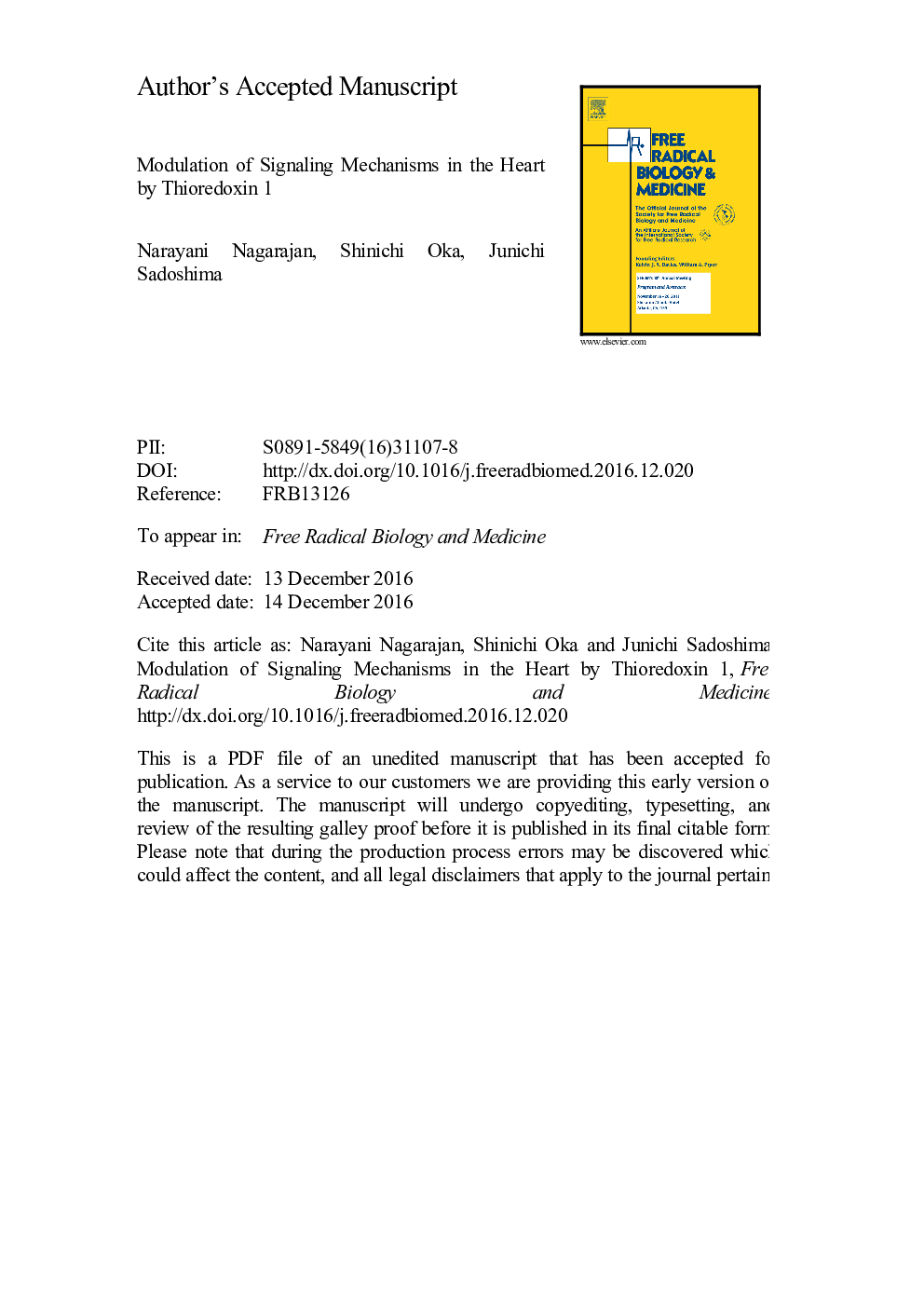| Article ID | Journal | Published Year | Pages | File Type |
|---|---|---|---|---|
| 5501893 | Free Radical Biology and Medicine | 2017 | 29 Pages |
Abstract
Myocardial ischemia/reperfusion and heart failure are the major cardiac conditions in which an imbalance between oxidative stress and anti-oxidant mechanisms is observed. The myocardium has endogenous reducing mechanisms, including the thioredoxin (Trx) and glutathione systems, that act to scavenge reactive oxygen species (ROS) and reduce oxidized proteins. The Trx system consists of Trx, Trx reductase (TrxR), and an electron donor, NADPH, where Trx is maintained in a reduced state in the presence of TrxR and NADPH. Trx1, a major isoform of Trx, is abundantly expressed in the heart and exerts its oxidoreductase activity through conserved Cys32 and Cys35, reducing oxidized proteins through thiol disulfide exchange reactions. In this review, we will focus on molecular targets of Trx1 in the heart, including transcription factors, microRNAs, histone deactylases, and protein kinases. We will then discuss how Trx1 regulates the functions of its targets, thereby affecting the extent of myocardial injury caused by myocardial ischemia/reperfusion and the progression of heart failure.
Keywords
ITRAQCysICATIκBZDFSOD1PGC-1αRIPCASK1TrxTrxRGSKCREBCDDPAP1TXNIPTFBSPRXATG4Smyd1Activator protein 1 (AP-1)Redd1Inhibitor-κBRegulated in development and DNA damage responses 1DTTAMPKNF-κBH2SCyPTACNADPHHIF-1TCAMSCHDACNOxROSAdenosine TriphosphateATPMyocardial infarctionangiotensin-IIAkttricarboxylic acidNADPH oxidaseischemia/reperfusionisobaric tags for relative and absolute quantitationTransgenicthioredoxin reductasetransverse aortic constrictionthioredoxinAng-IIDisulfidedithiothreitoltranscription factor binding siteMesenchymal stem cellsHydrogen sulfidesuperoxide dismutase 1CysteinecyclophilinAnti-oxidantdominant negativehypoxia-inducible factor-1nuclear factor-κBUTR یا untranslated regions untranslated regionZucker diabetic fatty ratsisotope-coded affinity tagNitric oxidenicotinamide adenine dinucleotide phosphatehistone deacetylasecAMP response element binding proteinprotein kinase Badenosine monophosphate-activated protein kinasePeroxiredoxinRemote ischemic preconditioningapoptosis signal-regulating kinaseglycogen synthase kinaseReactive oxygen speciesPeroxisome proliferator-activated receptor gamma coactivator-1α
Related Topics
Life Sciences
Biochemistry, Genetics and Molecular Biology
Ageing
Authors
Narayani Nagarajan, Shinichi Oka, Junichi Sadoshima,
